I’ve seen and heard many Florida gardeners complain that tomatoes just do not grow well here. It’s too hot, it’s too buggy, it’s too wet, or the alligators eat them all, or something.
That’s just not true.
Tomatoes grow wonderfully here in Florida. In fact, not a few miles away from my place is Ruskin, Florida — the home of “Ruskin Tomatoes,” which I recall were quite famous when I was a kid back in the late 70s.
I suspect they were simply the first fresh tomatoes available in U.S. grocery stores after the winter hungry gap. This was before all the imported foods from Mexico and South America flooded the market and spoiled us with year-round fresh produce in the middle of winter.
And this isn’t a digression — in fact, it’s the salient point.
The reason Ruskin Tomatoes were so early to the market was because we can grow tomatoes in the winter.
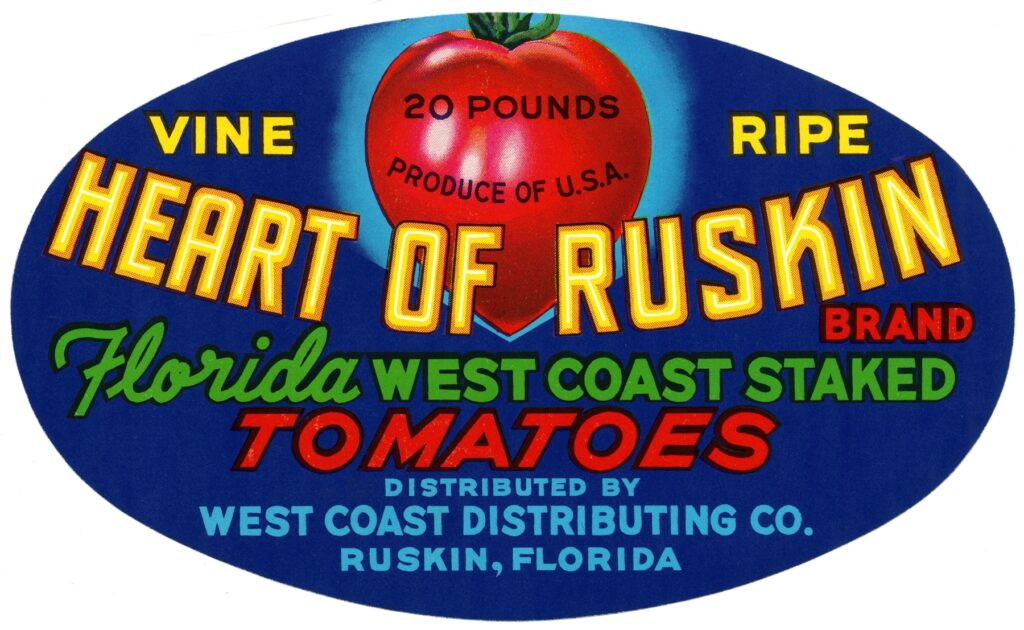
The flipside of this awesome boon is that we CAN’T grow them in the summer!
(Except for ONE single particular type of tomato — more on that below!)
Winter isn’t the gardener’s enemy in Florida — summer is. And it isn’t getting any better.
The storms and occasional hurricanes were bad enough, but now we’re dealing with heat indices in the triple digits. This is the new norm. It certainly isn’t the climate I moved into 32 years ago.
Why Gardeners Don’t Know When To Plant Tomatoes in Florida
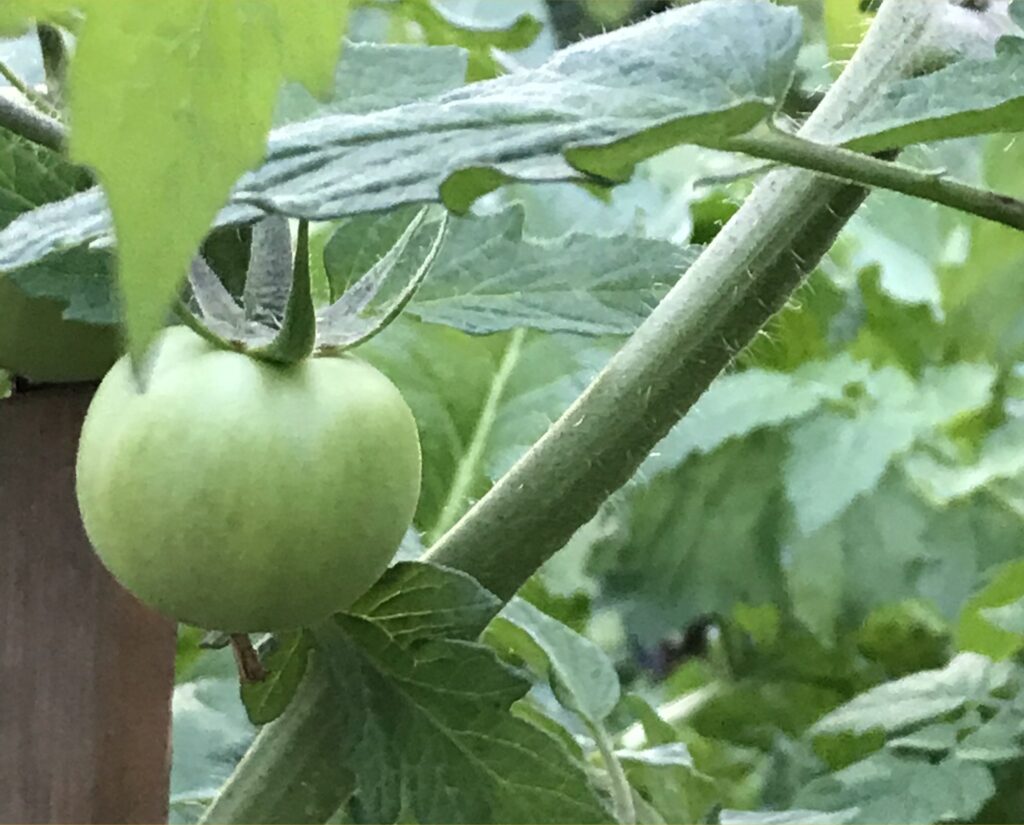
The reason most gardeners think you can’t grow tomatoes in Florida (especially new ones and transplants from other states) is because:
- They don’t understand our very weird climate cycles.
- They haven’t learned our convoluted planting schedules.
- They don’t really know how tomatoes evolved to grow.
Florida’s subtropical climate provides a uniquely annoying setting for gardening, particularly when it comes to growing tomatoes.
The state’s steamy temperatures, blistering sunshine, and long growing season may seem ideal for these popular plants. While summer is the usual time to grow tomatoes in most parts of the country, Florida summers are simply too much for tomatoes.
Tomatoes are a jungle creeper, evolving in cooler, dryer elevations of South America. They’re meant for mild and moist conditions under the forest canopy, not in the blistering sunlight.
If you live in Indiana or Ohio, you want to pump as much sunlight into these guys as you can during your short growing season. But, Florida is closer to the equator, with a higher UV rating. And increasing development and land clearing is turning the state into a seriously dangerous hot spot.
So, consider several factors when planning your planting schedule, especially given the recent updates to USDA hardiness zones in 2023, when most of the state moved up a growing zone.
Here’s a detailed look at these considerations:
Subtropical Climate
Florida’s subtropical climate means that it experiences mild winters and hot, humid summers. This climate allows for multiple growing seasons, making it possible to grow tomatoes both in the fall and late winter.
However, the extreme heat and humidity of summer can pose challenges, including increased pest and disease pressure, which can affect the health and productivity of tomato plants.
Updated USDA Hardiness Zones
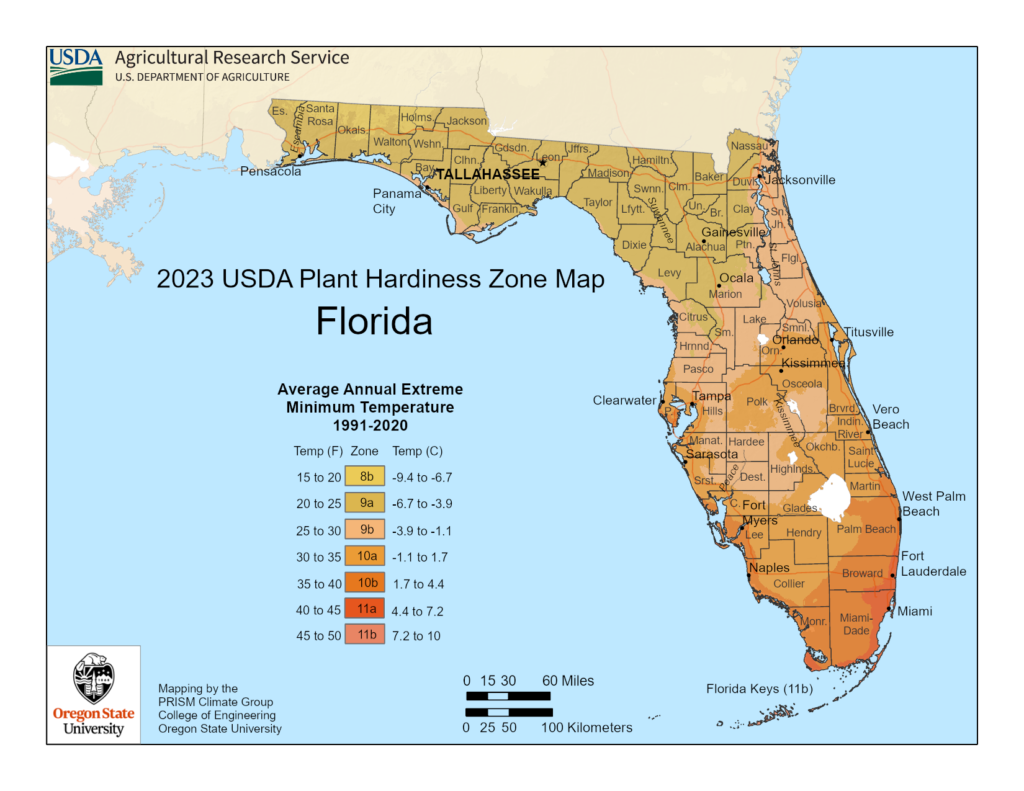
In late 2023, the USDA updated its hardiness zones, which reflect the average annual minimum winter temperature. These updates have shifted some areas of Florida into warmer zones. For example, parts of central Florida have moved from Zone 9 to Zone 10.
Understanding these new zones is crucial for determining the best planting times and selecting appropriate tomato varieties that can thrive in the updated climate conditions.
Best Times to Plant Tomatoes in Florida
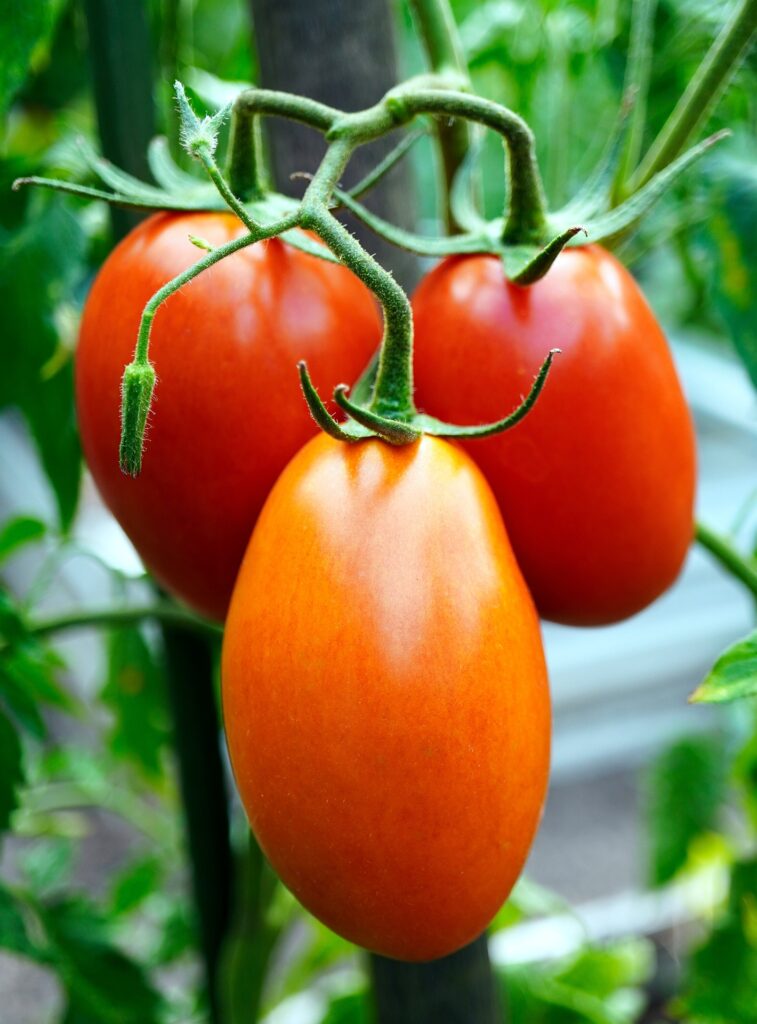
Now that you understand the backstory, here’s some actionable information you can use right now when planning your Florida garden.
Because right now is the best time to start your tomato seeds.
Fall: The Optimal Planting Season for Tomatoes in Florida
Fall is considered the best time to plant tomatoes in Florida. The weather conditions during this season are typically favorable, with cooler temperatures and lower humidity levels compared to the sweltering summer months.
This change in temperatures reduces the risk of diseases and pest infestations, which can wreak havoc on tomato plants.
There is an increased risk of hurricanes and tropical storms as the season progresses but fall and winter are usually mild enough to replant should my garden get washed out.
In fact, in Central and South Florida, you can pretty much plant out tomato starter plants any time between September and March. There can be a few chilly nights in late December and January, but if you avoid the two weeks of actual “winter,” you can just put starters in the ground at any time.
When to Start Florida Fall Tomatoes from Seed Indoors
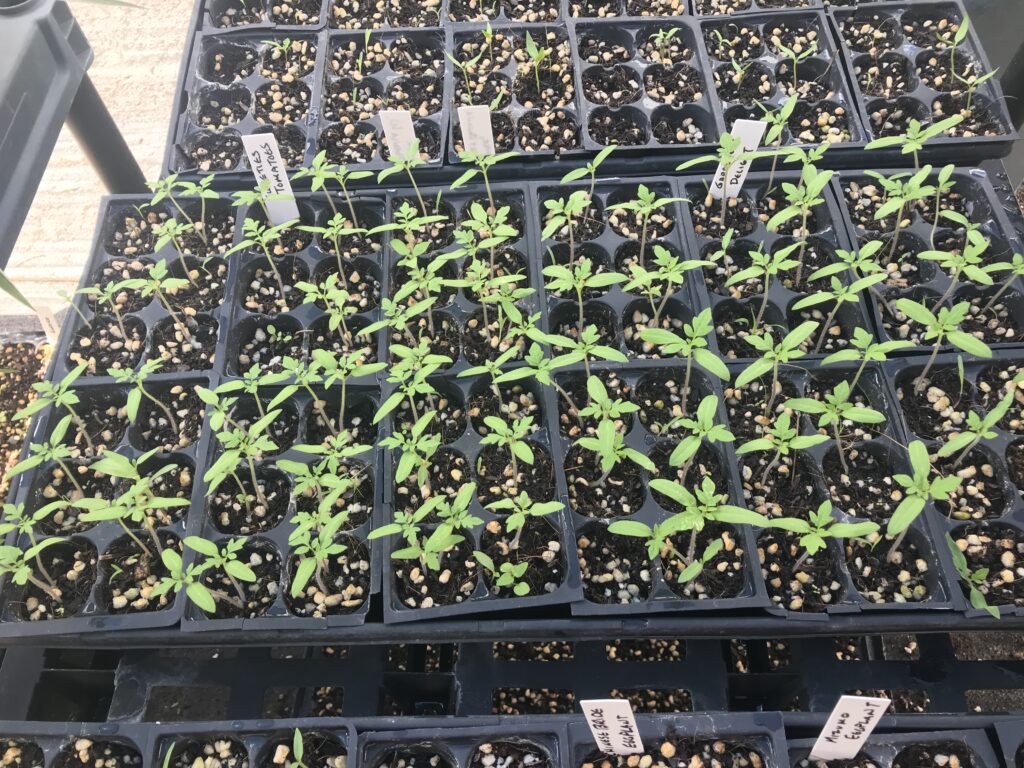
Tomatoes will do best when planted out as well-developed seedlings of 6 or 8 weeks. For that reason, you want to start your fall tomatoes in mid-summer. You can start them out of doors, as long as they’re protected from heavy rainfall.
However — and this seems to be an increasingly annoying fact of Florida gardening life — understand that excessive heat can prevent your tomato seeds from germinating.
When I first started growing fall tomatoes in earnest — maybe 10 years ago — I didn’t have any trouble with outdoor germination in the summer as long as I could keep my seed trays covered and protected from washout by summer storms.
During the last four or five years, however, I’ve had to start them indoors in the summer to ensure good germination. Except for Everglades tomatoes (which are a distinct species), many a seedling tray has sat empty for weeks without a sprout. I’ve begun starting more seeds indoors as a result.
- Zone 8: Start seeds indoors in June through July.
- Zone 9: Start seeds indoors in July.
- Zone 10: Start seeds indoors in July
- Zone 11: Start seeds indoors in mid to late August.
When to Plant Fall Tomatoes Out into the Garden
- Zone 8: Transplant seedlings in July or August
- Zone 9: Transplant seedlings in August through September
- Zone 10: Transplant seedlings in August through September
- Zone 11: Transplant seedlings in September through November
Late Winter/ Early Spring: Another Ideal Planting Time
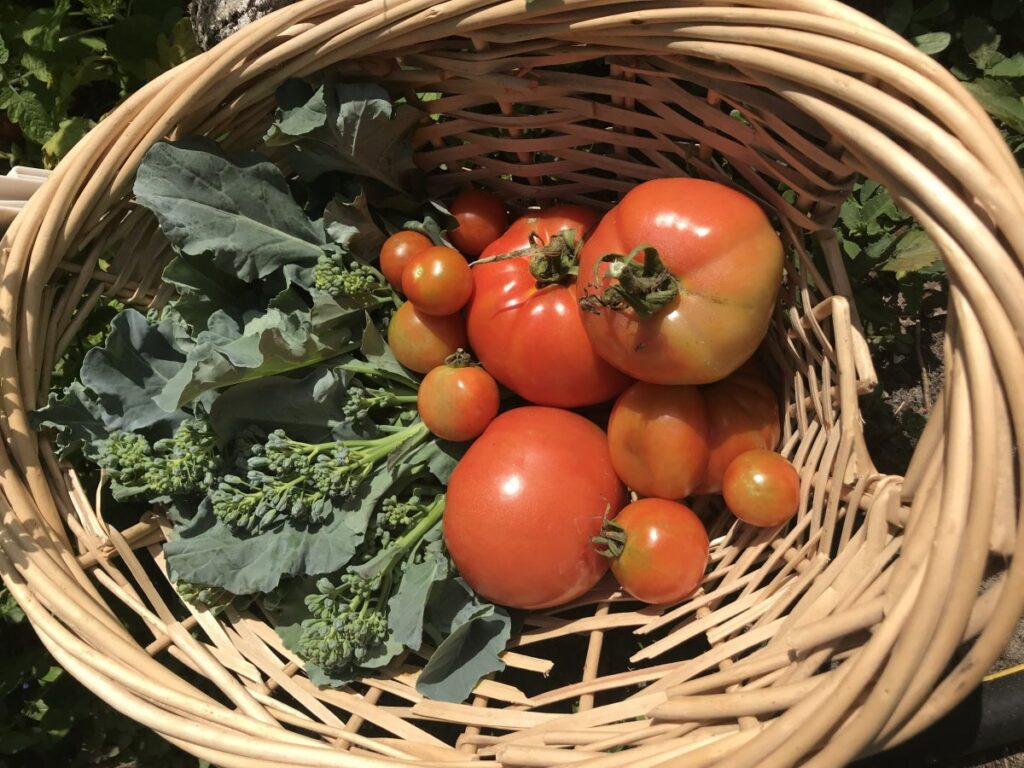
Most gardeners think of January and February as “late winter,” but for Florida gardeners, these are the first months for spring planting.
Late winter offers another excellent window for planting tomatoes in Florida. During this period, temperatures are gradually warming up, but they are still cool enough to prevent the rapid spread of pests and diseases.
The risk of frost is minimal, especially in southern parts of the state, allowing tomato plants to thrive as they move into spring.
Florida gardeners should prepare to cover their tomato plants from late December through the end of February. A simple frost cloth or old sheet is usually sufficient.
Honestly, this is the main reason I prefer shorter-statured determinate tomatoes to more ambitious indeterminate types. They’re just easier to cover during the occasional cold snap.
Late winter and spring are also the dry season in Florida, so you may need to water manually instead of depending on rain.
When to Start Spring Tomato Plants from Seed Indoors
- Zone 8: Start seeds indoors in early January.
- Zone 9: Start seeds indoors in late December through early January.
- Zone 10: Start seeds indoors in late December through early January.
- Zone 11: Start seeds indoors in December
When to Plant Spring Tomatoes Out into the Garden
Check temperatures before planting out and be sure to provide a cover when nights fall below 40°F.
- Zone 8: Transplant seedlings in mid-February through early April.
- Zone 9: Transplant seedlings in late January through February
- Zone 10: Transplant seedlings in late January through February
- Zone 11: Transplant seedlings in January through February
Best Varieties of Tomatoes to Grow in Florida
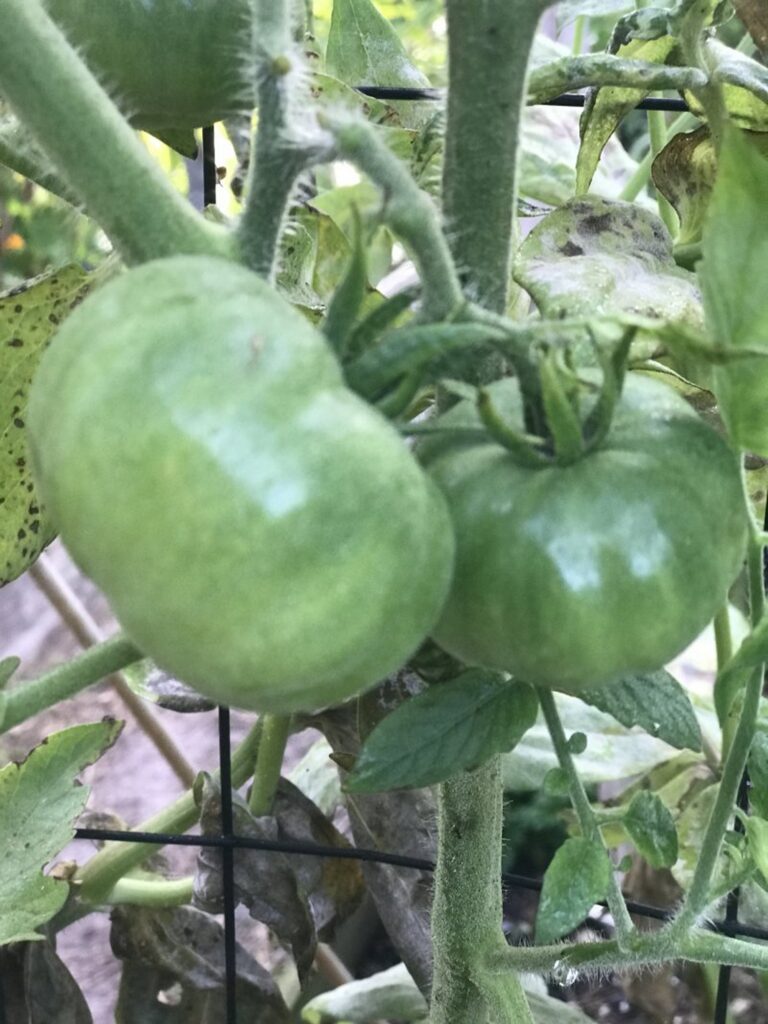
Along with not understanding our very weird planting schedule, a lot of new Florida gardeners are choosing the wrong varieties.
Choosing the right variety of tomatoes is crucial for a successful harvest in Florida. Some of the best varieties include:
- ‘Sweet 100’: A prolific cherry tomato variety that produces an abundance of sweet, small fruits.
- ‘Floradade’: A large-fruited variety developed for Florida’s climate, resistant to cracking and splitting.
- ‘Marglobe’: A small, fast developing fruit that will outrun most pest and disease pressure.
- ‘Mortgage Lifter’: A beefsteak tomato that tops out at about 5 to 6 feet tall and stands up to heat.
- ‘Solar Fire’: Bred specifically for hot climates, this variety is heat-tolerant and resistant to common diseases.
- ‘Heatwave II’: Another heat-tolerant variety, perfect for Florida’s warm temperatures.
Finally, the jewel in the crown — ‘Everglades’ tomatoes.
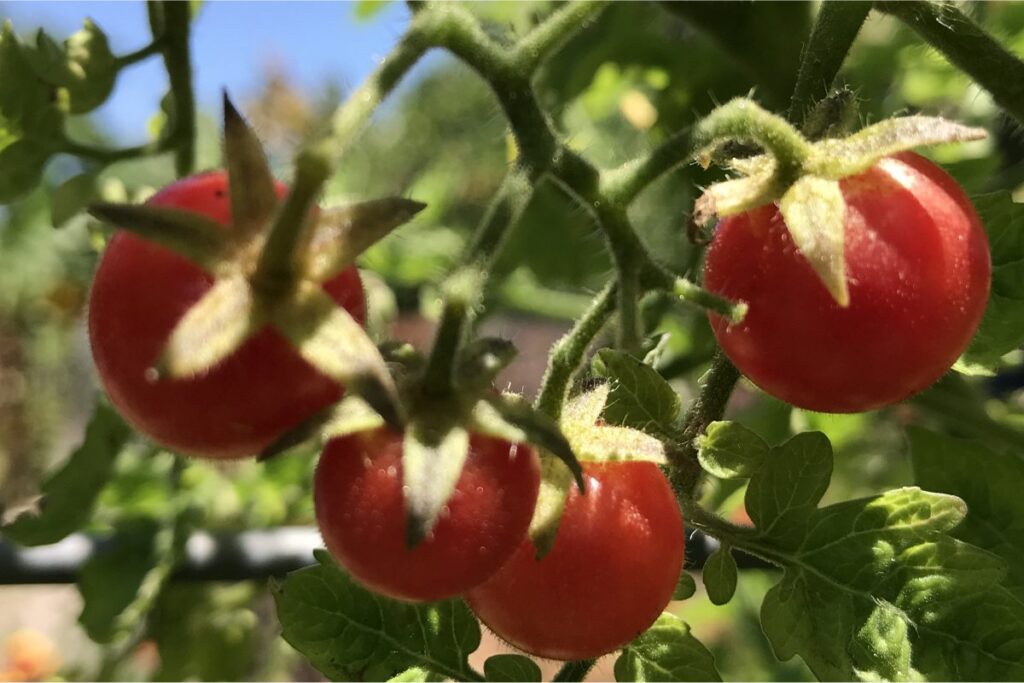
These are a small, currant-type tomato that thrives in Florida’s hot and humid conditions. It’s a distinct species that remains truer to its wild Peruvian roots. So, it’s a lot more resistant to pests and disease, particularly in hot weather.
You can even grow these tomatoes in the summer in Florida — they’re just that hardy.
Start Tomato Seeds Now
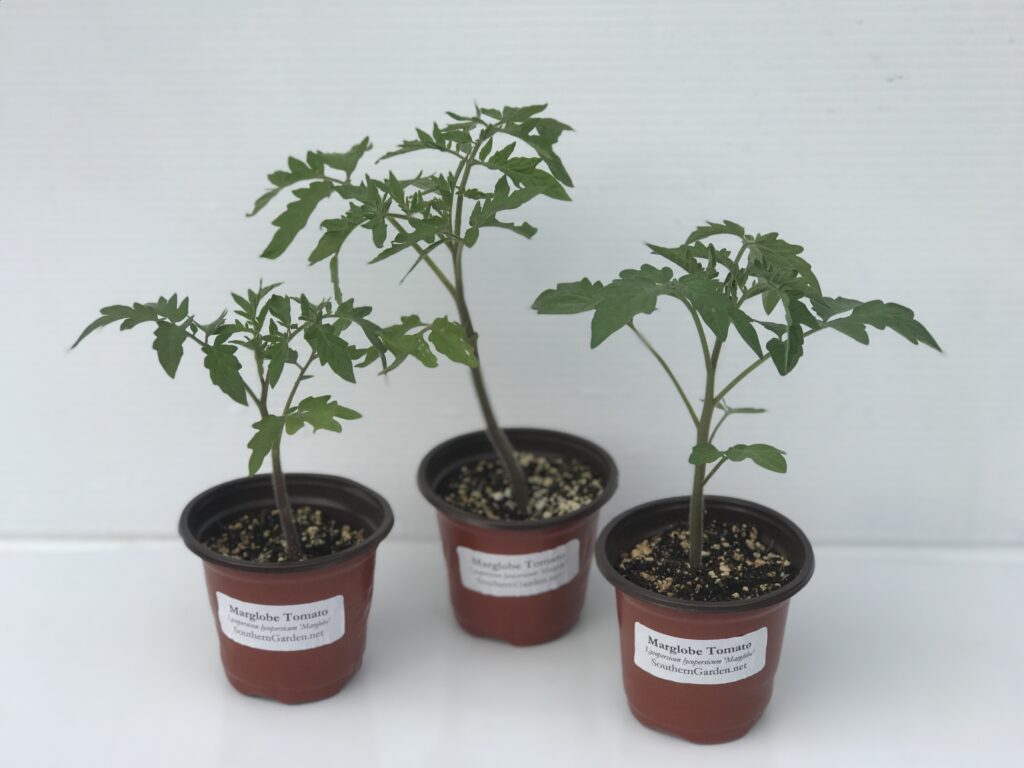
Now that it’s July, it’s time to start preparing for your fall Florida garden. Long-season annual vegetables like tomatoes, peppers, and eggplant like a nice head start before planting out.
IFAS recommends planting them out in August through November (depending on where in the state you live). I’m in Central Florida, on the Gulf Coast, so I tend to procrastinate due to the flexibility of my planting times.
But the time to start tomato seeds for fall planting is right now.
You’ll find seeds for Florida-friendly tomato varieties in my Etsy shop. And don’t worry — I always include enough seeds in each pack for both the fall and late winter planting seasons.
So, remember, you CAN grow tomatoes in Florida. It’s just a matter of “right plant, right place,” and particularly for Florida gardeners… right time.